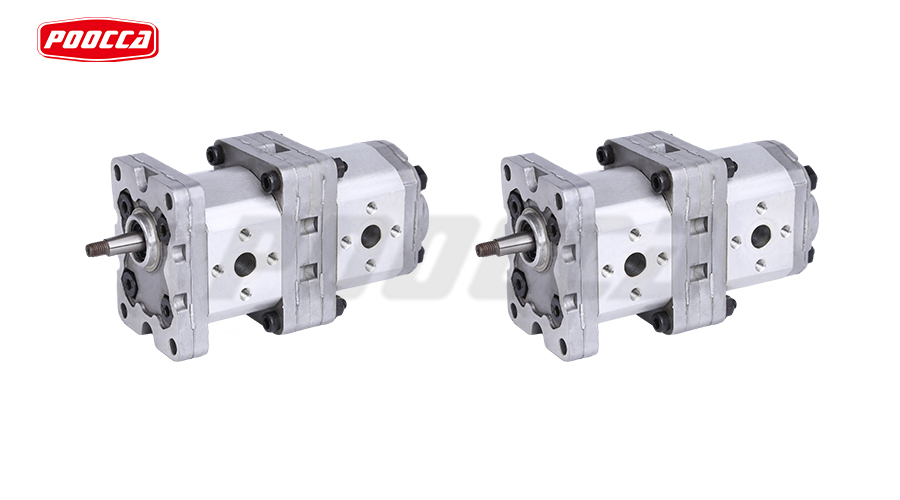Explore the capabilities of gear pumps: Can they work in both directions?
1. Introduction: Understand the gear pump and its working principle
2. Unidirectionality of gear pump and its typical operation mode
3. Examples of gear pumps designed to work in both directions
4. Determining the Right Pump for Your Application: Factors to Consider
5. Conclusion: Understand the limitations and capabilities of gear pumps in different applications
–Introduction: Understand the gear pump and its working principle
A gear pump is a positive displacement pump commonly used in hydraulic systems for fluid transfer. They work by using two meshing gears (usually spur gears) to create a seal and trap fluid within the pump chamber. As the gears rotate, they force fluid out of the pump through the outlet and into the desired location.
A major advantage of gear pumps is their ability to operate in both directions of rotation. This means they can be used to draw fluid into the pump or push fluid out of the pump, depending on the needs of the hydraulic system. For example, in some applications it may be necessary to extract fluid from a low-pressure source and transfer it to a high-pressure system. In other cases, fluid may need to be pushed from a high-pressure source to a lower-pressure system. Gear pumps can handle both situations with ease.
The bidirectional function of the gear pump is achieved through the design of the gear itself. The teeth on the gears are cut at an angle so that they mesh together and form a seal, even when rotating in opposite directions. This seal prevents fluid leakage from the pump chamber and ensures efficient fluid transfer throughout the hydraulic system.
In addition to being able to operate in both directions, gear pumps have other advantages over other types of positive displacement pumps. For example, they tend to be more efficient than piston or diaphragm pumps because there are fewer moving parts that can cause energy loss. Their structure is also relatively simple and easy to maintain and repair.
Gear pumps are a versatile and reliable option for fluid transfer in hydraulic systems. Their ability to operate in both directions of rotation makes them ideal for a wide range of applications, and their efficiency and simplicity make them a popular choice among engineers and technicians.
–The unidirectional nature of gear pumps and the way they typically operate.
Gear pumps are unidirectional, meaning they can only move fluid in one direction. They operate via two meshing gears that rotate against each other, capturing and expelling fluid from the pump chamber. As one gear rotates clockwise, it pushes fluid out of the outlet, while the other gear draws fluid into the inlet. This unidirectional movement ensures efficient fluid transfer in hydraulic systems.
–Examples of gear pumps designed to work in both directions
Gear pumps are usually designed to operate in one direction, but in some cases they can be modified to operate in both directions. A common application is in hydraulic systems requiring bidirectional fluid flow, such as reversible pumps or systems with backflow prevention. In these cases, the gear pump can be equipped with a bypass or check valve to allow fluid flow in the opposite direction if required. Another solution is to use a double-acting gear pump, which has two independent pump chambers and pistons that move in opposite directions. This allows fluid transfer in both directions without the need for additional components. By designing gear pumps that work in both directions, engineers can create more versatile and efficient hydraulic systems.
–The importance of correct maintenance and service life of gear pumps.
Proper care and maintenance are critical to the service life of your gear pump. Regular inspection, cleaning and lubrication prevents wear and ensures smooth operation. Neglecting these tasks can result in increased friction, heat generation, and potential damage to the pump. Worn or damaged parts must be replaced promptly and installed correctly to avoid leaks or misalignment. Additionally, using high-quality fluids and filters can extend the life of your pump. By investing time and effort in maintaining your gear pump, we can minimize downtime, reduce repair costs, and ensure its long-term efficient operation.
–Determining the Right Pump for Your Application: Factors to Consider.
When selecting a pump for your application, several factors must be considered. First, the fluid type and viscosity should be evaluated to ensure compatibility with the pump materials. Second, the required flow rate and pressure differential must be determined to select the appropriate pump size and design. Additionally, environmental factors such as temperature and corrosiveness should be considered when choosing the right material. Other considerations include noise levels, maintenance requirements and energy efficiency. By carefully evaluating these factors, you can select the right pump to meet your specific needs and provide reliable performance for your application

–Conclusion: Understand the limitations and capabilities of gear pumps in different applications.
In summary, gear pumps are versatile and reliable components in a variety of applications. However, their limitations and capabilities must be understood to ensure optimal performance. POOCCA’s gear pumps provide a solution for those looking for a high quality, durable and efficient pumping solution. With advanced technology and innovative design, POOCCA’s gear pumps provide stable flow, minimal leakage and easy maintenance. They are suitable for use in a variety of industries, including automotive, chemical and petrochemical. Investing in POOCCA’s gear pumps not only ensures the longevity of your equipment, but also helps increase efficiency and reduce operating costs. By selecting the right pump for your application and considering POOCCA’s gear pumps as an option, you can achieve the best results and maximize the potential of your gear pump system.
Contact us today to learn more about POOCCA gear pumps and how they can enhance your gear pump system. If you have any questions or support, please feel free to contact us. Let’s work together to achieve success!
Post time: Nov-01-2023






